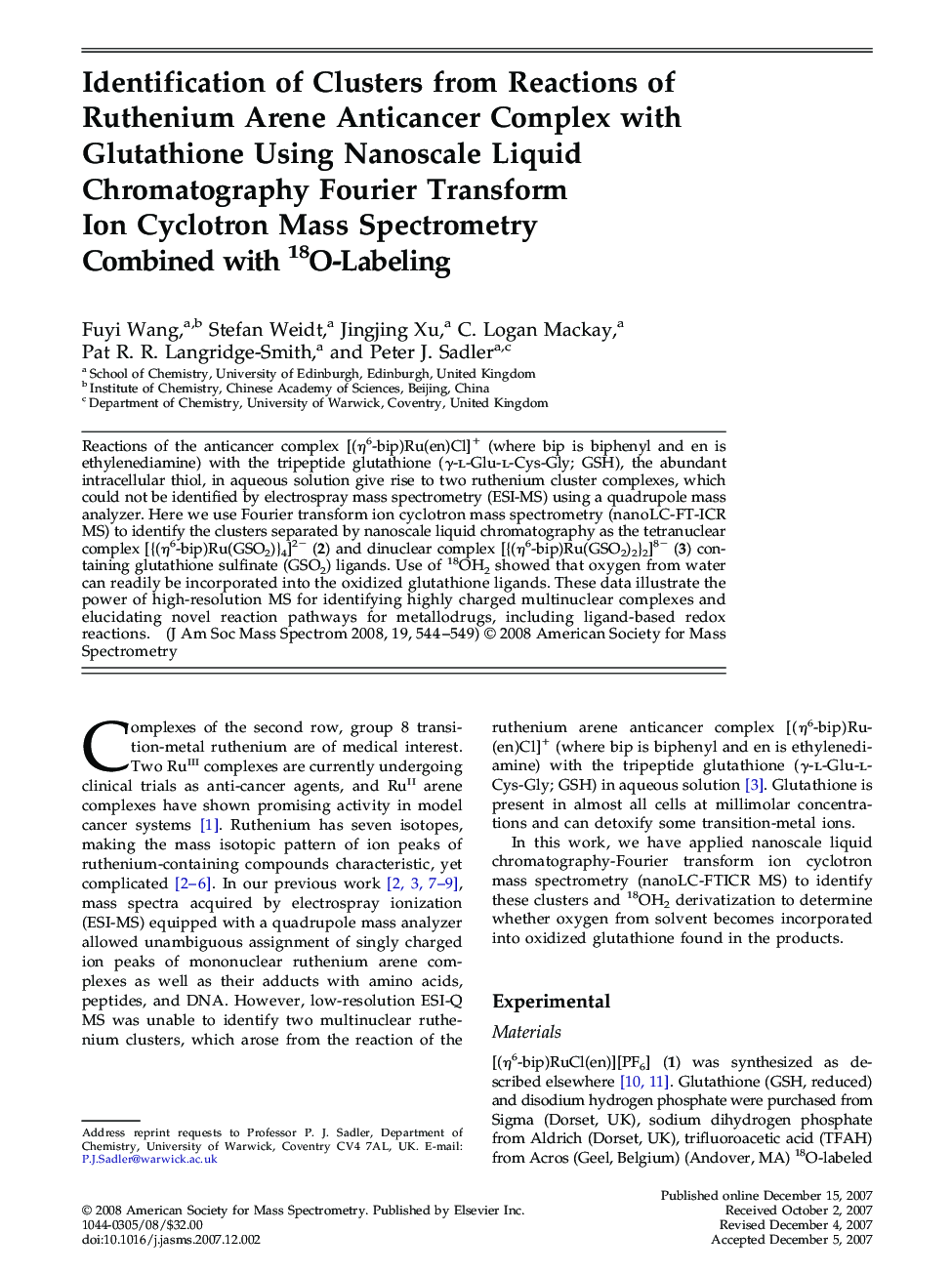| کد مقاله | کد نشریه | سال انتشار | مقاله انگلیسی | نسخه تمام متن |
|---|---|---|---|---|
| 1195469 | 964372 | 2008 | 6 صفحه PDF | دانلود رایگان |

Reactions of the anticancer complex [(η6-bip)Ru(en)Cl]+ (where bip is biphenyl and en is ethylenediamine) with the tripeptide glutathione (γ-l-Glu-l-Cys-Gly; GSH), the abundant intracellular thiol, in aqueous solution give rise to two ruthenium cluster complexes, which could not be identified by electrospray mass spectrometry (ESI-MS) using a quadrupole mass analyzer. Here we use Fourier transform ion cyclotron mass spectrometry (nanoLC-FT-ICR MS) to identify the clusters separated by nanoscale liquid chromatography as the tetranuclear complex [{(η6-bip)Ru(GSO2)}4]2− (2) and dinuclear complex [{(η6-bip)Ru(GSO2)2}2]8− (3) containing glutathione sulfinate (GSO2) ligands. Use of 18OH2 showed that oxygen from water can readily be incorporated into the oxidized glutathione ligands. These data illustrate the power of high-resolution MS for identifying highly charged multinuclear complexes and elucidating novel reaction pathways for metallodrugs, including ligand-based redox reactions.
Journal: Journal of the American Society for Mass Spectrometry - Volume 19, Issue 4, April 2008, Pages 544–549